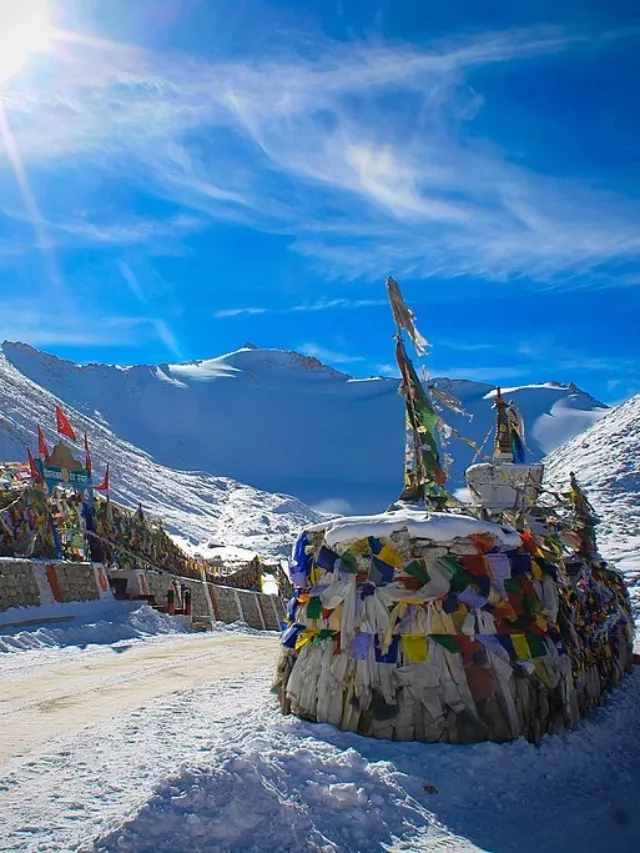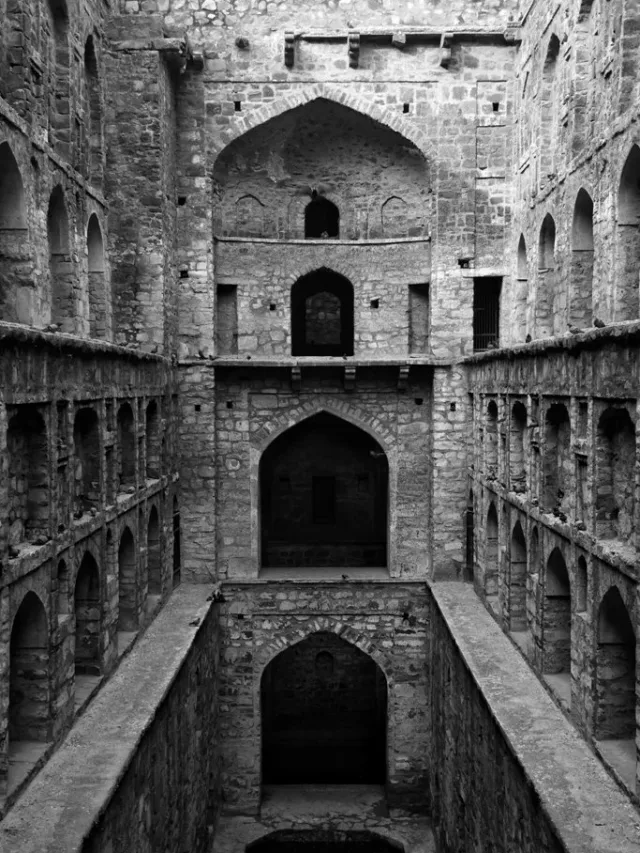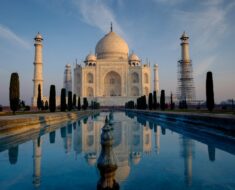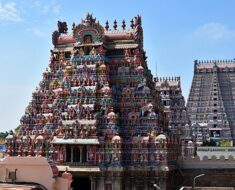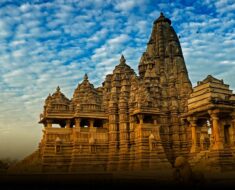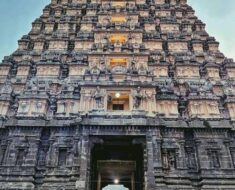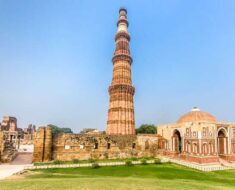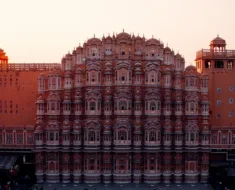India Gate is one of the most important and celebrated monuments in Delhi. In recent years it has become a major tourist attraction in India. It is a war memorial located on the Rajpath in New Delhi.
Millions of local and foreign tourists visit India Gate every year. Here is a list of some of the lesser-known and amazing facts about India Gate you would love to know!
India Gate – War Memorial
India Gate is a war memorial that was built to pay tribute to the soldiers of the Undivided Indian Army who were martyred during World War I. It is dedicated to the honour of 70,000 soldiers who fought and were martyred between 1914 and 1921 in France, Flanders, Mesopotamia, Persia, East Africa, Gallipoli, and the Second Anglo-Afghan War.

It is one of the biggest war memorials in the world. Imperial War Graves Commission (I.W.G.C) established in December 1917 was given the task to build war graves and memorials for the soldiers who were killed in World War I and India Gate was part of their work.
Earlier, India Gate was called the All India War Memorial. Its foundation stone was laid by the Duke of Connaught on 10 February 1921, at 16:30. The Foundation ceremony was attended by officers and men of the British Indian Army. Then Viceroy of India Chelmsford said on the occasion
“The stirring tales of individual heroism will live forever in the annals of this country”, and that the memorial which was a tribute to the memory of heroes, “known and unknown”, would inspire future generations to endure hardships with similar fortitude and “no less valour”.
During the ceremony, many brigades and regiments were honoured with the title of “Royal” for their distinguished services and gallantry.
It was inaugurated by Lord Irwin on 12 February 1931 almost ten years after the foundation stone laying ceremony.
The Duke also read out a message by the King, which said, “On this spot, in the central vista of the Capital of India, there will stand a Memorial Archway, designed to keep”, in the thoughts of future generations, “the glorious sacrifice of the officers and men of the British Indian Army who fought and fell”
Read More: Jallianwala Bagh Massacre – A Murderous Incident in the History of Mankind
India Gate – Design & Architecture
Europe’s most prominent and leading designer of war memorials Sir Edwin Lutyens designed the India Gate. He was the main architect of New Delhi and had designed sixty-six war memorials in Europe.
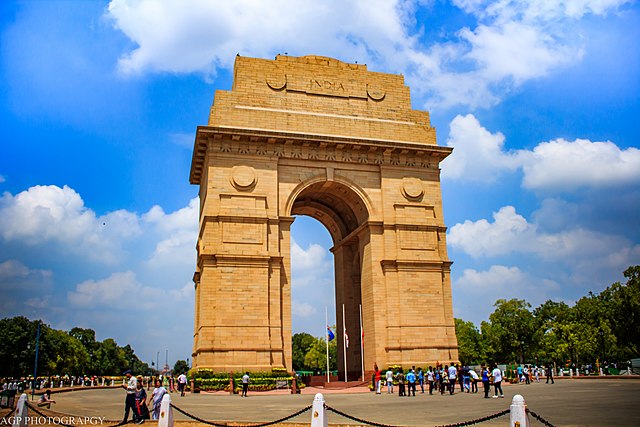
Sir Edwin Lutyens was a member of I.W.G.C. and the designer of the Cenotaph, in London which was the first national memorial built after World War I.
The architectural style of the India Gate is similar to the triumphal arch such as the Arch of Constantine, in Rome. It is often called the creative rework of the Arc de Triomphe and the Gateway of India in Mumbai.
India Gate is 42 meters high and 9.1m in width. It is made of red and yellow Bharatpur sandstone and stands in the centre of a hexagonal complex. The complex has a diameter of about 625 meters and covers 306,000 m² of area approximately.
India Gate stands on a low base and rises in stages to a huge moulding with a shallow domed bowl on its top.
Read More: Bhikaiji Cama: The First Lady to Hoist India’s Flag on Foreign Soil
Inscriptions on India Gate

Imperial suns are engraved on the cornice of the India Gate which symbolizes the British Imperial Colony. India is inscribed on both sides of the arch with the dates MCMXIV (1914) on the left side and MCMXIX (1919) on the right side. Below these following letters are inscribed.
“TO THE DEAD OF THE INDIAN ARMIES WHO FELL AND ARE HONOURED IN FRANCE AND FLANDERS MESOPOTAMIA AND PERSIA EAST AFRICA GALLIPOLI AND ELSEWHERE IN THE NEAR AND THE FAR-EAST AND IN SACRED MEMORY ALSO OF THOSE WHOSE NAMES ARE HERE RECORDED AND WHO FELL IN INDIA OR THE NORTH-WEST FRONTIER AND DURING THE THIRD AFGHAN WAR”
Names of 13,218 soldiers are inscribed on the walls of India Gate to pay homage to the martyrs for their sacrifices.
Read More: Sarojini Naidu – ‘The Nightingale of India’
Amar Jawan Jyoti
Amar Jawan Jyoti or the flame of the immortal soldier was built after the Indo-Pakistan War of 1971 to commemorate the martyred and unknown soldiers of the Indian Armed Forces who died during the war.

It consists of a black marble cenotaph and Amar Jawan is written in gold on all four sides of it. At the top of the cenotaph, an L1A1 self-loading rifle is placed on its barrel capped by a war helmet of an unknown soldier.
The pedestal has four urns, out of which one of the flames is burning continuously since 1971. LPG was used as a fuel source from 1971 to 2006 and from then, CNG is used as the source.
The Amar Jawan Jyoti memorial was inaugurated by then Prime Minister of India, Indira Gandhi in 1972.
During Independence and Republic days, all four flames burn simultaneously. It is manned round the clock by soldiers from the Army, Air Force, and the Indian Navy.
Read More: Siachen Glacier – The Highest Battle Ground on Earth
Canopy

There is a 73-foot canopy about 150 meters east of the India Gate. It is inspired by the 6th-century pavilion of Mahabalipuram and it is placed at a junction of six roads near India Gate. The domed canopy rests over four Delhi-order columns.
It was constructed in 1936 and a marble statue of the British Emperor of India King George V was placed to pay homage to him.
The statue was later removed and relocated to Delhi’s Coronation Park due to opposition from some Indian political parties.
Statue of Subhas Chandra Bose
Prime Minister Narendra Modi on 21 January 2022 announced that a statue of the Indian freedom fighter and Commander-in-Chief of the Indian National Army – Netaji Subhas Chandra Bose would be installed in the canopy at India Gate.
A 28-foot high and 6-foot wide 3D holographic statue of Bose was inaugurated at the site on 23 January 2022, celebrated as Parakram Diwas.
On 8 September 2022, PM Modi inaugurated the newly-made statue of Netaji Subhas Chandra Bose near the India Gate.
Read More: Statue of Unity – Tallest Statue in the World
National War Memorial

On 25 February 2019, the Government of India built the National War Memorial near the India Gate to pay tribute to the Indian Armed Forces. It is spread over 40 acres of land around the canopy.
The names of armed forces personnel martyred during the armed conflicts of 1947–48, 1961 (Goa), 1962 (China), 1965, 1971, 1987 (Siachen), 1987-88 (Sri Lanka), 1999 (Kargil), and other operations such as Operation Rakshak, are inscribed on the memorial walls.
The National War Memorial complex has four concentric circles which are called
- Amar Chakra (Circle of Immortality)
- Veerta Chakra (Circle of Bravery)
- Tyag Chakra (Circle of Sacrifice)
- Rakshak Chakra (Circle of Protection)
These four concentric circles are designed as a Chakravyuh, an ancient Indian war formation.

There is a gallery that has bronze murals that portray the battles of Gangasagar, Longewala, Tithwal, Rizangla, Operation Meghdoot, and Trident.
The Param Yodha Sthal houses the busts of the 21 recipients of the Param Vir Chakra, India’s highest military honour.
A war museum is also under construction and will be completed soon.
Republic Day Parade
After 1972, it has been a custom that on every Republic Day, the President, Prime Minister, Chiefs of Amry, Navy, and Air Force, and other dignitaries place a wreath at Amar jawan Jyoti and honour the dead and unknown soldiers
Read More: 15 Must-Visit Historical Places in India

